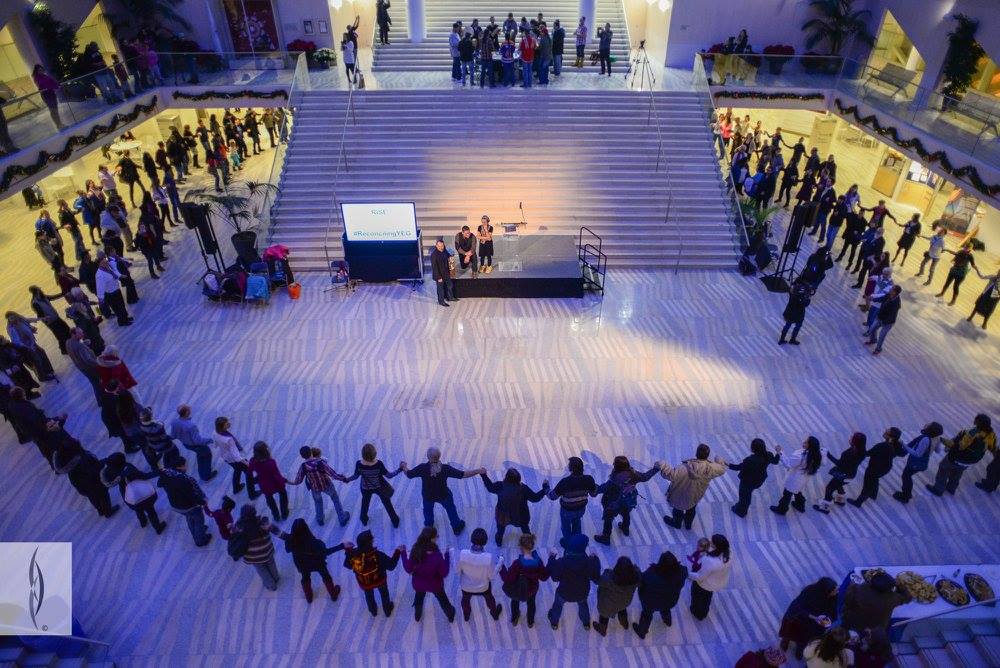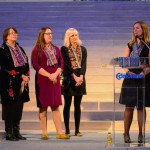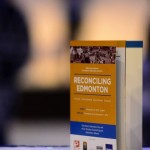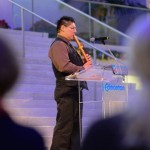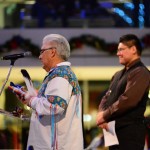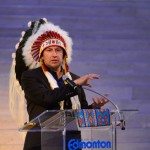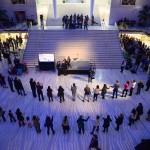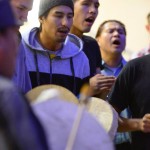Too often Edmonton’s story is presented as one of pioneers, homesteaders and settlement where Indigenous Peoples are relegated to the distant past. Too often reconciliation is thought of as a contemporary concern, a modern-day buzzword. We wanted to help shift these perspectives through visual art and poetry grounded in the historic record. What were moments when Indigenous individuals and settlers came together in Edmonton’s past? What can we learn from how they were photographed and documented?
Reconciling Edmonton brought together four collaborators: Anna Marie Sewell, Miranda Jimmy, Danielle Metcalfe-Chenail and Jennie Vegt – two Indigenous, two settler – to explore these questions and create an opportunity for people to discuss them on social media and in person.
What happened was more than any of us could have hoped for. It went far beyond the seven archival images, paintings, and poems, and a Round Dance to unveil them. It went beyond four collaborators and a microgrant from ECAMP. It brought significant awareness and learning to archives and heritage institutions in our city. It attracted important partners like the Canadian Native Friendship Centre, City’s Aboriginal Relations Office, City Clerk’s Office, Edmonton Arts Council and Reconciliation in Solidarity Edmonton to expand the reach and increase the number of people who could take part. Through their help and additional support, we were able to welcome over 500 people to City Hall on Wednesday, November 25, 2015 in what has been described by many as an emotional evening of reconciliation.
We were honoured that dignitaries from all levels of government and Grand Chief Tony Alexis took time to be present and deliver greetings. Elder Gilman Cardinal’s words of wisdom and blessing for the event were particularly moving for all involved. We heard from attendees that the drumming, singing and dancing made City Hall feel open and accessible in a different way from before, that it felt like a historic occasion. We heard and experienced first-hand how the event brought people together to engage in important conversations and make new connections.
Our dream of a true reconciliation of the past, present, and future in that one moment came true, and it gave us hope for better relations between Indigenous, settler, and newcomer communities in Edmonton. As we expected, there were bumps and awkward moments as we negotiated our path forward but we worked through them and developed a real trust for each other’s intentions and abilities. As a collaboration between Indigenous and non-Indigenous creators, we demonstrated throughout our process how respect and caring can lead to beautiful art, poetry, conversations and a deeper understanding of our shared experiences.

